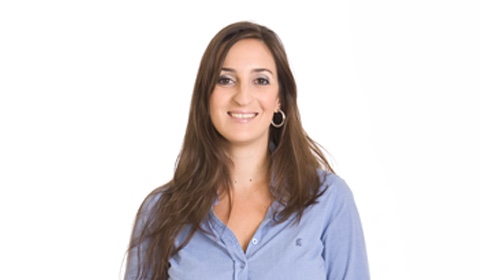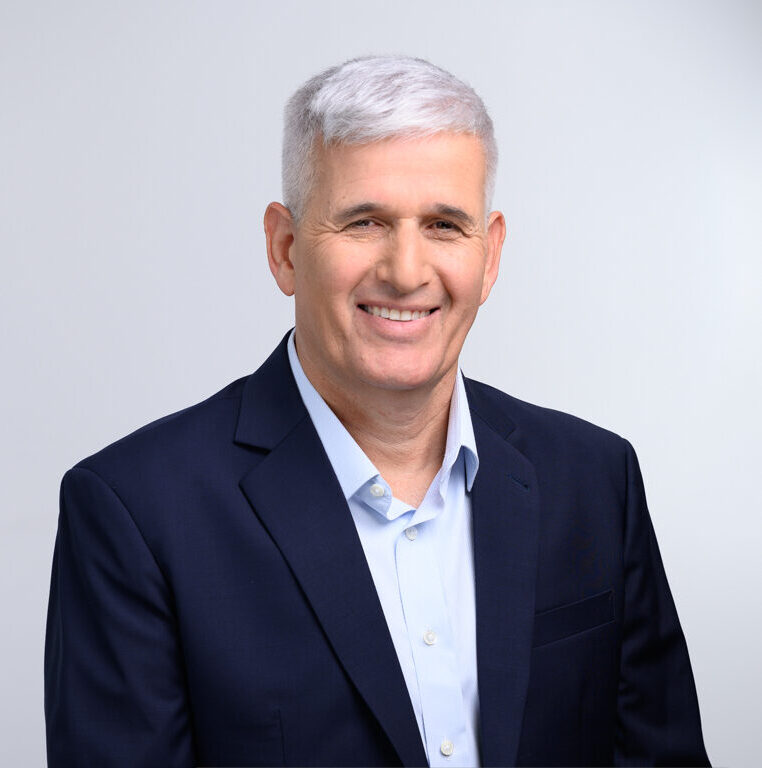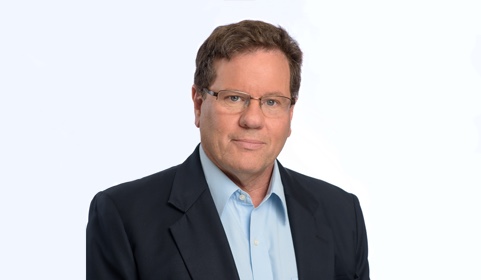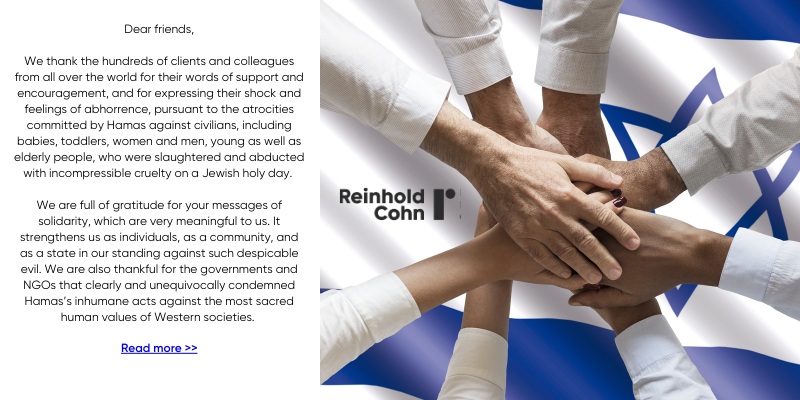Patent Eligibility of Software-Related Inventions



A Decision issued by the Israeli Patent Registrar in the matter of Digital Layers Inc1 is the most recent milestone in the ongoing local debate on patent eligibility of software-related inventions. This Decision is a first instance in a long time in which a software-related invention has been found to be patent-eligible. The Registrar ruled that the claimed invention should be examined as a whole, and that technical contribution of the software element may be taken into consideration when examining whether or not an invention falls within a field of technology and meets the patent-eligibility requirements of Section 3 of the Patents Law. This may signify a relaxation of the hitherto stringent view on patent-eligibility of software-related inventions.
Patent eligible inventions are defined in Section 3 of the Israeli Patents Law as follows:
“An invention, whether a product or a process, in any field of technology, which is new, useful and intended for industrial application, and which involves inventive step, is a patentable invention”.
Similar to other jurisdictions around the world, a clear and straightforward definition of what constitutes a “technological invention” has yet to be reached. After a line of decisions, the Registrar issued Examination Guidelines in 20122. According to these Guidelines, a main test for patent eligibility under Section 3 would be the identification of concrete technological character of a claimed product or process, or of the outcome of the process3. Hence, an invention would be considered as falling within a field of technology if it has inherent concrete technological character.
In a Registrar’s Decision in the matter of Teicher, published at the end of 20124 (“Teicher”), the Registrar overviewed the Examination Guidelines and listed criteria which may be of assistance when examining whether or not an invention falls within a field of technology, among which were: (i) the invention should be examined as a whole, without dissecting it into components, (ii) the contribution of the invention in its entirety should be compared to the prior art as identified subjectively by the applicant in the patent application (unlike research of prior art which examines the issue of inventive step, and which is an objective test), and (iii) whether the invention, as a whole, makes a contribution having concrete expression in a technological field – that is, whether it has inherent concrete technological character. In essence, these criteria were in agreement with the Examination Guidelines.
Following the issuance of the Examination Guidelines were a series of decisions (including Teicher), in which it was ruled that claims directed to software-related inventions of the subject applications do not fall within a field of technology, and were hence not patent eligible. Digital Layers was the first case in which the decision deviated from this trend, with a ruling that claims directed to a software-related invention fall within a field of technology, and as such meet the stipulations of Section 3 of the Patents Law.
The application entitled “A Method, System and an Apparatus for Delivering Media Layers” had a main claim reading as follows:
1. A system for facilitating access to multiple audio layer items over a communication network, comprising:
a network accessible media database, connected to a communication network, which stores multiple audio layer items, each having a plurality of separate and different audio layers which are independently accessible; and
at least one subscriber application for receiving a user selection of at least some of said multiple audio layer items, connecting to said media database, and receiving at least some of said plurality of audio layers;
wherein said at least one subscriber application having a mixing module which digitally synchronizes and mixes said at least one audio layers to create an audio remix representing a mixed digital audio signal.
The set of claims further includes three additional independent claims, each of which relates to a different aspect of the invention.
During examination, the examiner asserted that the claims were directed to mere content and they were thus rejected under Section 3, on the grounds that they constitute a pure mental act or a business method and hence do not fall within a field of technology. In an appeal the Registrar overruled the examiner’s rejection and allowed the claims.
At the outset, the Registrar discussed the issue of the man of skill in the art who is the addressee of the invention. The Registrar accepted the applicant’s stance that the invention is not intended for an audio technician, but rather to a person who is versed in the art of computer networks and servers, and who is also engaged in mixing audio media. However, the Registrar noted that this factor is not sufficient in itself to determine that the invention resides in a field of technology, though it is a factor to be taken into consideration, to some extent, when examining an application.
The Registrar noted that the outcome of the invention is the creation of a new audio file composed of at least a portion of the original audio layers, through the use of a mixing and synchronization module operating in systems that facilitate remote access.
The Registrar emphasized that this result is achieved by the use of main system components that include a database, accessible through a communication network, which stores the audio layer items, a computer application (that includes a graphical user interface for connection to the database), and a mixing module included in the application, which enables local mixing of the individual media layers.
As he had done in Teicher, the Registrar went on analyze the contribution of the invention as a whole, with reference to the applicant’s (subjective E.H- S.B.S ) view of the state of the prior art as disclosed in the specification. In doing so, he concluded that the contribution over the prior art, as it stems from the description, resides in providing access and editing capabilities to individual media layers, through a computer network, in a more efficient manner than the prior art. In particular, the Registrar referred to the explanations in the specification that storing multiple layer items, according to the prior art, requires large storage volume, whereas the claimed invention involves an improved technique of storing items which may reduce the required storage volume, and further that according to the invention there is reduced bandwidth for transmission of audio files in the communication network as compared to the prior art. He thus noted, in conclusion, that the technological contribution of the invention is an efficient process of selecting and mixing the separate audio files which improves storage utilization and reduces transmission bandwidth.
The Registrar referred to two European decisions5, and quoted, with approval, a statement from the Apple matter, which affirms that an invention which meets conventional patentable criteria should not be considered un-patentable merely because a computer program is used to implement it:
“It causes the device to operate in a new and improved way and it presents an improved interface to application software writers. Now it is fair to say that this solution is embodied in software but, as I have explained, an invention which is patentable in accordance with conventional patentable criteria does not become unpatentable because a computer program is used to implement it…”.
While referring to the invention in Digital Layers, the Registrar stated that the guidelines in the EPO and the Enlarged Board of Appeal with respect to the combination of software and computers are also applicable to the Digital Layers case. The Registrar thus maintained that the application offers, according to the Applicant, inter-operability that contributes to efficient usage of existing system components, among others, by means of the proposed mixing application. The Registrar went on to discuss the examiner’s assertion that the invention is a mere automation of a manual process. In this context the Registrar relied again on the specification, which states that, whereas known systems were, in essence, automated versions of manual processes, the invention offers the ability to edit multiple audio layers items, which can only be achieved by the claimed technological means. Hence, the Registrar concluded that the invention involves a contribution which is beyond mere automation of a manual process.
The Registrar therefore overruled the examiner’s rejection, concluding that the claims meet the provisions of Section 3 of the Patents Law, and has, accordingly, accepted the application.
Concluding Remarks:
The Registrar’s Decision in the Digital Layers matters is an important milestone in the debate relating to the patent-eligibility of software-related inventions. In this Decision the Registrar deviated from the long-held view of examiners that the Examination Guidelines relating to computer implemented inventions should be interpreted to mean that it is necessary to show that the advantages of the invention are a result of the features of only the hardware (physical) components that are recited in the claims, while shifting focus from the software components.
The Examination Guidelines outline certain auxiliary rules to determine whether an invention has concrete technological character, including whether the claimed invention may cause the computer to operate in a new manner, such as (but not only) in improving the computer’s performance (e.g. speed, performance reliability, improved utilization of data storage capacity), or cause the establishing of new inter-relationship between components of the computer system. In Digital Layers the Registrar made it clear that the software components recited in a claim (the mixing module in the case of Digital Layers) may be essential and valid components when analyzing patent-eligibility in light of the Examination Guidelines, despite the fact that they operate on “standard” hardware components.
It was noted by the Registrar in the Decision that the technical contribution of the invention should be examined as a whole, over the prior art, as identified in the specification. The contribution may support the assertion that the claimed invention involves concrete technological character. Thus, note should be taken that it may be advantageous to include in the description reference to the prior art, the technical person addressed by the invention, the technical problem that is being solved, and the contribution of the invention over the prior art, as identified by the Applicant.
The Registrar reviewed, with approval, two EPO decisions, and held that certain criteria outlined therein are also applicable in Israel. The Registrar even used terms such as “regular technical effect“, a term that is more commonly used in Europe. Having said this, we do not believe that mere allowance of a European patent application would be regarded as a persuasive argument that the claimed invention meets the provisions of Section 3; however it may, without doubt, serve as a supplementary supporting argument.
Modified Examination
The Decision also laid down an important guiding principle with respect to the Examiners’ scope of judgment when refusing a request for Modified Examination.
Section 17(c) of the Law allows an Applicant to apply for examination based on a patent granted in one of a number of specified foreign jurisdictions (“Modified Examination“). When Modified Examination is requested, the application undergoes an abbreviated examination in which the claims are considered to meet the patentability requirements, thereby expediting and simplifying prosecution of the application6.
According to Section 17(d) of the Law, the Registrar, the Superintendent of Examiners or his deputy, may refuse the request for Modified Examination “if they determine on the basis of the material available to them or submitted to them in the course of the examination that … special reason exists for not accepting the application“.
In the Digital Layers case, a request for Modified Examination was filed after a few rounds of examination, during which novelty and inventive step objections had been raised. In response to these objections, the scope of the claims was narrowed, among others, by adding a recitation of the “mixing module” discussed above.
The Examiner rejected the “late” request for applying Modified Examination. The Registrar disagreed. In doing so the Registrar did not consider the earlier rejections, raised against a broader language of the claims, to be a “special reason” under Section 17(d) for denying a request for Modified Examination. The Registrar ruled that the preliminary terms for meeting the request for Modified Examination should be examined at the time the request is made, and should the application meet the preliminary conditions (such as shared priority of the Israeli application and the corresponding patent on which the Modified Examination is based), then examination should proceed by the abbreviated, Modified Examination route. Referring to the Digital Layers application, the Registrar found that after narrowing the scope of the claims, the Examiner had not revealed relevant prior art, which constituted a reason for rejection of the request for Modified Examination.
1 Ex Parte proceedings under Section 46(a) of the Law in the matter of Patent Application No. 190125 in the name of Digital Layers Inc., Decision dated February 17, 2014 (“Digital Layers”).
2 See Appendix B: Section 3 of the Law – A Patentable Invention.
3 Ibid, section 7.2.
4 Ex Parte proceedings under Section 46(a) of the Law in the matter of Patent Application No. 171773 in the name of Mordechai Teicher, Decision dated December 10, 2012.
5 Enlarged Board of Appeal opinion G 003/08 dated May 12, 2010, HTC Europe Co Ltd v. Apple Inc [2013] EWCA Civ 451; (hereinafter: “Apple”) and AT & T Knowledge Ventures v. Comptroller General [2009] EWHC 343 (Pat) [2009] FSR 19 (hereinafter: “AT&T“).
6 It should be noted that the request for Modified Examination does not circumvent the need to address the non-statutory subject matter objection raised by the Examiner under Section 3 of the Law.
This article is provided for general information only. It is not intended as legal advice or opinion and cannot be relied upon as such. Advice on specific matters may be provided by our group’s attorneys.
